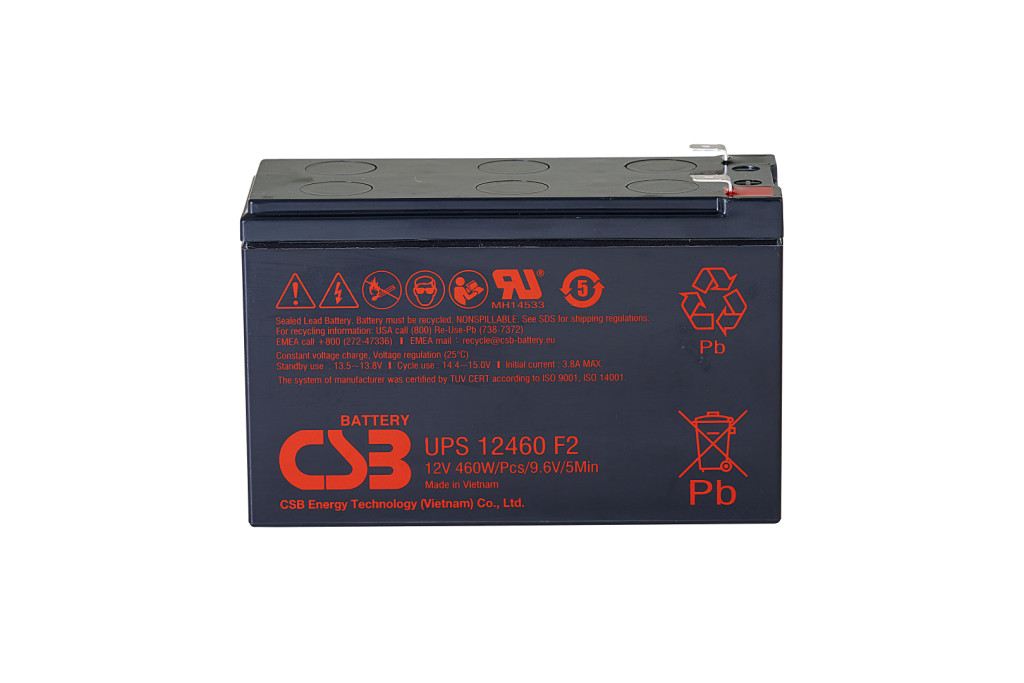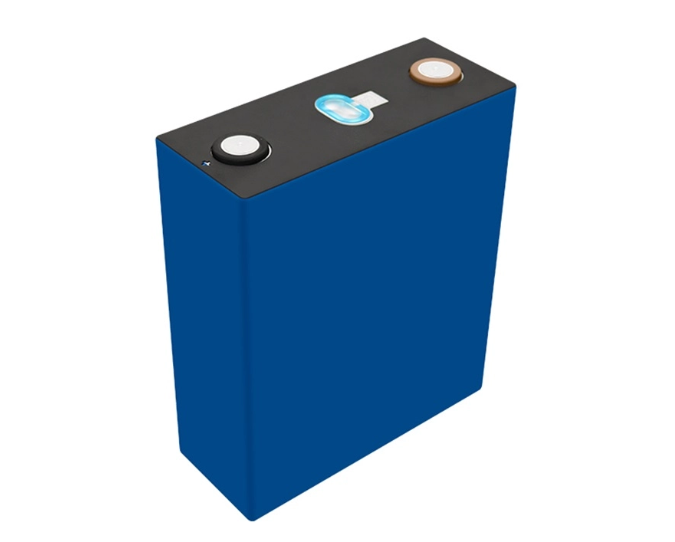Choosing the right UPS battery technology is critical for ensuring uptime, efficiency, and long-term value. The two leading options today are traditional lead-acid batteries and modern Lithium Iron Phosphate (LFP) batteries. Each has advantages depending on your application, lifecycle expectations, and budget.
This guide compares UPS battery types so you can determine the best fit for your data center, server room, edge computing site, or enterprise IT application.
Lead-Acid Batteries
Proven, cost-effective, and widely deployed.
Advantages
- Lowest initial capital cost
- Familiar maintenance practices with wide technician support
- Compatible with many existing UPS platforms
Limitations
- Short life expectancy (3–5 years, ~300–500 cycles)
- Larger footprint and heavier weight per kWh
- Reduced performance at higher ambient temperatures
- Requires more maintenance and ventilation
Lead-acid remains a practical choice for budget-conscious UPS applications or legacy system retrofits.
Lithium Iron Phosphate (LFP) Batteries
The new standard in UPS energy storage.
Advantages
- Higher energy density—more runtime in less space
- Extended cycle life (3,000–5,000+ cycles)
- Up to 15-year lifespan — up to 5× longer than lead-acid
- Lower maintenance with fewer battery replacements
- Greater thermal stability and safety compared to other lithium chemistries
- High discharge capability for demanding IT loads
Considerations
- Higher upfront cost
- Requires integrated Battery Management System (BMS)
- May need tighter environmental controls for extreme conditions
For data centers, enterprise IT, and edge deployments, LFP UPS systems provide superior long-term value, enhanced safety, and reduced total cost of ownership.
At-A-Glance Battery Comparison
| Feature / Metric | Lead-Acid | Lithium Iron Phosphate (LFP) |
| Typical Service Life | 3–5 years | Up to 15 years |
| Cycle Life | 300–500 | 3,000–5,000+ |
| Energy Density | 30–50 Wh/kg | 100–150 Wh/kg |
| Maintenance | Regular | Low |
| Thermal Stability | Moderate | High / safer chemistry |
| Best For | Budget, legacy systems | Data centers, enterprise, edge |
Which UPS Battery Is Right for You?
Choosing between lead-acid and Lithium Iron Phosphate (LFP) batteries depends on your application, environment, budget, and uptime requirements. Use this guide to match the right battery technology with your operational priorities.
Choose Lead-Acid If…
- You need the lowest upfront cost
- The UPS operates in a controlled environment (≤ 25–30 °C)
- A 3–5 year replacement cycle is acceptable
- The application is non-critical or infrequently discharged
- You are maintaining a legacy UPS requiring VRLA batteries
- Weight and footprint are not constraints
Best Fit: Budget-limited projects, standard office UPS, telecom closets, and legacy UPS refreshes.
Choose Lithium Iron Phosphate (LFP) If…
- You want up to 15 years of battery life with minimal maintenance
- The deployment is in edge, retail, industrial, or high-temperature environments
- Uptime and reliability are mission-critical
- Space or weight is limited (kiosks, micro data centers, compact racks)
- You want lower total cost of ownership
- You need improved safety, thermal stability, and manageable high discharge rates
Best Fit: Data centers, enterprise IT, healthcare, POS, kiosks, industrial controls, and distributed edge deployments.
Quick Decision Matrix
| Your Priority | Best Choice |
| Lowest upfront cost | Lead-Acid |
| Longest battery lifespan | LFP |
| Lowest total cost of ownership | LFP |
| High-temperature performance | LFP |
| Minimal maintenance | LFP |
| Legacy system compatibility | Lead-Acid |
| Smaller size & lighter weight | LFP |
| Maximum uptime & reliability | LFP |
Still Not Sure? Ask Yourself These Questions
- What is your acceptable battery replacement interval?
- <5 years → Lead-acid
- 10–15 years → LFP
- What temperatures will the UPS experience?
- <30 °C → Either
- 30–50 °C → LFP strongly recommended
- What’s more important—initial cost or lifetime cost?
- Initial cost → Lead-acid
- Long-term savings → LFP
- Is safety and thermal stability a priority?
- Standard environments → Lead-acid works
- Edge, retail, industrial, or higher-risk sites → LFP preferred
Explore XPC UPS with Advanced Battery Technologies
Xtreme Power Conversion offers UPS solutions in both LFP and lead-acid configurations:
- Li90 Lithium UPS – High-efficiency LFP UPS with up to 15-year battery life
- J60 / J60i / J60C / J60Ci – Ultra-compact LFP UPS with up to 99% efficiency
- J90 / J90i – 1U online LFP UPS with remote switching and high-temperature performance
- P91 Li / P91g Li – Line-interactive LFP UPS for distributed IT and retail
- M90S / M90C / M90U Modular UPS – Scalable unity PF UPS with modular lead acid battery options
- High Temperature UPS Solutions – Designed for operation up to 50 °C
- Data Center UPS Systems – Optimize uptime, efficiency, and rack density
Ready to Select the Right UPS Battery Technology?
The wrong battery choice can lead to shorter runtimes, higher maintenance, and unexpected downtime. With XPC’s LFP UPS solutions, you get:
- Up to 15-year battery life
- Reduced operating and maintenance costs
- Improved thermal stability and safety
Talk to Our Experts Today — We’ll help you choose the optimal UPS battery for your environment.
Contact Us | View All Products
(800) 582-4524
sales@xpcc.com


